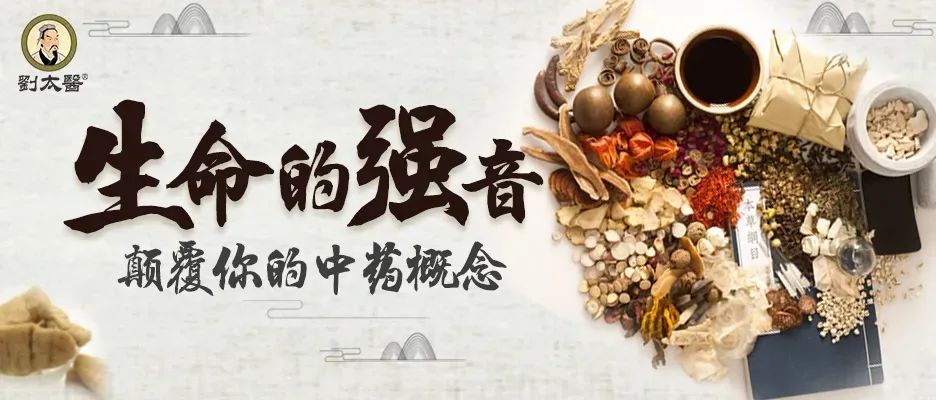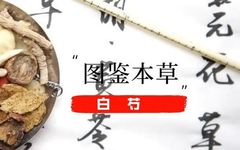
Plant Morphology
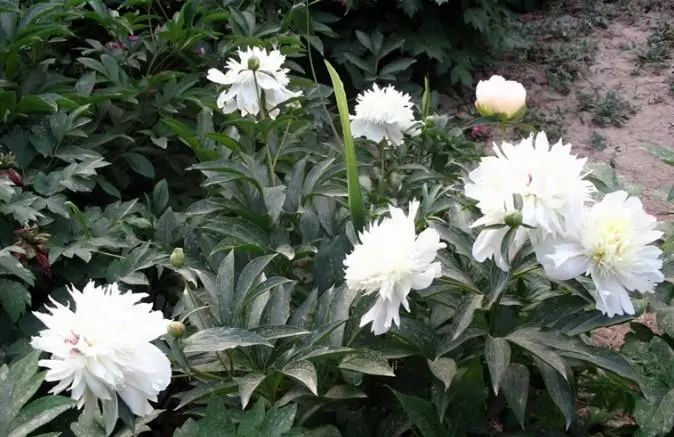 Perennial herbaceous vine; roots cylindrical, gray-black, approximately 8 mm in diameter; stems covered with two rows of hairs. Leaves are opposite, membranous, ovate-lanceolate, 7-10 cm long, 4-8 cm wide at the base, gradually tapering to a point at the tip, with deep ear-shaped heart at the base, ear-shaped and drooping, both sides covered with soft hairs. Umbellate cymes axillary, with more than 20 flowers; calyx covered with fine hairs on the outside, with 5 glands on the inner base; corolla white, lobes elongated, with fine hairs inside; the corona is cup-shaped, slightly longer than the corolla, with a small tooth in the middle of the lobes, or with folds or notches; pollen sacs with one in each chamber, drooping; stigma slightly bifid at the tip. The fruit is a double follicle or only one developed, short lanceolate, about 8 cm long, 1 cm in diameter, tapering towards the end, with a narrower base, the outer pericarp has straight stripes; seeds are oval, 6 mm long, 3 mm wide; seed hairs are white and silk-like, 3 cm long. Flowering period is from June to October, fruiting period is from August to November.
Perennial herbaceous vine; roots cylindrical, gray-black, approximately 8 mm in diameter; stems covered with two rows of hairs. Leaves are opposite, membranous, ovate-lanceolate, 7-10 cm long, 4-8 cm wide at the base, gradually tapering to a point at the tip, with deep ear-shaped heart at the base, ear-shaped and drooping, both sides covered with soft hairs. Umbellate cymes axillary, with more than 20 flowers; calyx covered with fine hairs on the outside, with 5 glands on the inner base; corolla white, lobes elongated, with fine hairs inside; the corona is cup-shaped, slightly longer than the corolla, with a small tooth in the middle of the lobes, or with folds or notches; pollen sacs with one in each chamber, drooping; stigma slightly bifid at the tip. The fruit is a double follicle or only one developed, short lanceolate, about 8 cm long, 1 cm in diameter, tapering towards the end, with a narrower base, the outer pericarp has straight stripes; seeds are oval, 6 mm long, 3 mm wide; seed hairs are white and silk-like, 3 cm long. Flowering period is from June to October, fruiting period is from August to November.
Characteristics of Medicinal Material
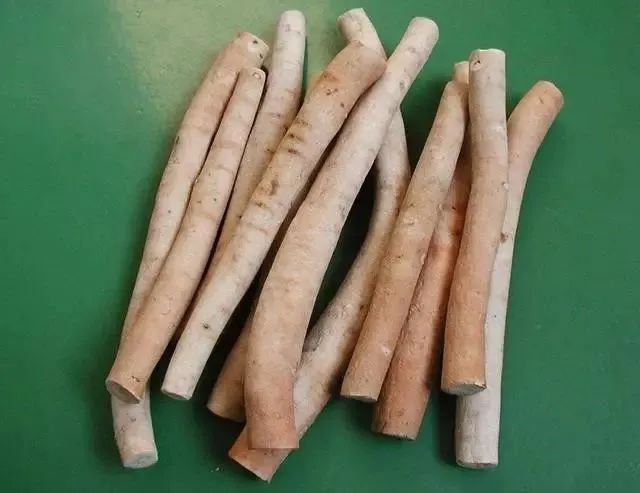 This product is cylindrical, straight or slightly curved, with flat ends, 5-18 cm long, and 1-2.5 cm in diameter. The surface is whitish or light reddish-brown, smooth or with longitudinal wrinkles and fine root marks, occasionally with remnants of brownish outer skin. The texture is solid, not easily broken, with a relatively flat cross-section, whitish or slightly reddish-brown, with distinct growth rings and radial rays. The aroma is mild, with a slightly bitter and sour taste.
This product is cylindrical, straight or slightly curved, with flat ends, 5-18 cm long, and 1-2.5 cm in diameter. The surface is whitish or light reddish-brown, smooth or with longitudinal wrinkles and fine root marks, occasionally with remnants of brownish outer skin. The texture is solid, not easily broken, with a relatively flat cross-section, whitish or slightly reddish-brown, with distinct growth rings and radial rays. The aroma is mild, with a slightly bitter and sour taste.
[Source] The root of the cultivated species of the Ranunculaceae plant, Peony (Paeonia).
[Distribution] Grows in shrubs or grasslands on hillsides and in valleys. Mainly produced in Anhui and other regions.
[Harvesting and Processing] Harvest the roots of Peony that have been planted for 3-4 years in summer or autumn, remove the rhizomes and fibrous roots, wash clean, scrape off the rough skin, and briefly boil in boiling water to soften the roots, then dry in the sun.
[Properties and Channels] Bitter; sour; slightly cold; enters the Liver and Spleen channels.
[Functions and Indications] Nourishes blood and harmonizes the Ying (nutritive) Qi; alleviates pain; astringes Yin and pacifies the Liver. Indicated for menstrual irregularities; abdominal pain during menstruation; metrorrhagia; spontaneous sweating; night sweats; pain in the hypochondrium and abdomen; limb cramps; headaches; dizziness.
[Dosage] Internal use: decoction, 5-12 g; or in pills or powders. Large doses can be used at 15-30 g.
[Precautions] Not suitable for use alone in cases of deficiency-cold. Contraindicated with Li Lu (Veratrum).
Clinical Applications
1. For treatment of fullness in both hypochondria with chills and fever, extreme pain leading to abscess formation: Bai Shao (白芍) and Dang Gui (当归) each 3 liang (111.9 g), stir-fried Zhi Zi (炒栀子) 5 qian, Sheng Gan Cao (生甘草) 3 qian, Jin Yin Hua (金银花) 5 liang. Decoction for oral administration (from “Dong Tian Ao Zhi” – Huagan Xiaodu Decoction).2. For treatment of Liver Qi stagnation with daydreaming and feeling lost, perceiving oneself as two: Bai Shao 2 liang (74.6 g), Ren Shen (人参) 5 qian, Bei Mu (贝母) and Xiang Fu (香附) each 3 qian, Yu Jin (郁金) 1 qian. Decoction for oral administration (from “Bian Zheng Lu” – Gui Hun Decoction).3. For treatment of poisoning from Goutweed: Bai Shao 3 liang (111.9 g), Bai Fan (白矾) 5 qian, Dang Gui and Mu Dan Pi (牡丹皮) each 1 liang, Chai Hu (柴胡) 3 qian, Fu Zi (附子) 1 qian. Decoction for oral administration (from “Bian Zheng Lu” – Bai Fan Decoction).4. For treatment of heart pain due to heat stagnation: Bai Shao 2 liang (74.6 g), stir-fried Zhi Zi 3 qian, Gan Cao, Ban Xia (半夏), and Chai Hu each 1 qian. Decoction for oral administration (from “Shi Shi Mi Lu” – Xie Huo Zhi Tong Decoction).5. For treatment of Liver channel wind-heat: Blood dryness leading to stubborn sores, sores appearing on the inner thigh, astringent like a bean, with a piece of flesh protruding, resembling a fungus: Bai Shao 1 liang (37.3 g), Ren Shen and Dang Gui each 5 qian, Bai Zhu (白术), Zhi Zi, Mu Dan Pi, Sha Shen (沙参), and Tian Hua Fen (天花粉) each 3 qian, Chuan Xiong (川芎) 2 qian, Chai Hu, Lian Qiao (连翘), and Gan Cao each 1 qian. Decoction for oral administration (from “Yang Yi Da Quan” – Qing Feng Decoction).6. For treatment of red vaginal discharge: Bai Shao (vinegar-fried), Dang Gui (wine-fried) each 1 liang (37.3 g), Sheng Di Huang (生地黄) 5 qian (wine-fried), E Jiao (阿胶) (flour-fried) and Mu Dan Pi each 3 qian, Huang Bai (黄柏) and Niu Xi (牛膝) each 2 qian, Xiang Fu (wine-fried) 1 qian, Da Zao (大枣) 10 pieces, and Hei Shui Dou (黑水豆) 1 liang. Decoction for oral administration (from “Fu Qing Zhu Nu Ke” – Qing Gan Zhi Lin Decoction).7. For treatment of facial nerve paralysis: Bai Shao 10-150 g, Dan Shen (丹参) 10-30 g, Ge Gen (葛根) 10-30 g, Guang Di Long (广地龙) 12 g. Adjust according to symptoms. Decoction divided into 2 doses, 1 dose per day. A total of 115 cases treated, results: 24 cases cured after 2 doses, 58 cases cured after 6 doses, 24 cases cured after 10 doses; 9 cases ineffective (Yan Yan Ling, Journal of Traditional Chinese Medicine).8. For treatment of gallstones: Bai Shao 100 g, Yu Jin 50 g, Dan Pi 50 g, Chai Hu 50 g, Zhi Shi (枳实) 40 g, Ban Xia 40 g, Huang Qin (黄芩) 50 g, Da Huang (大黄) 40 g, Gan Jiang (干姜) 30 g. Decoction for oral administration, 1 dose per day. Implement total attack therapy, generally 1-4 doses, if ineffective, switch to other therapies and combine with Western medicine. A total of 1068 cases treated, results: 852 cases clinically cured; 185 cases improved, with a total effective rate of 97.1% (Liu Ting Jun et al., Journal of Integrated Traditional and Western Medicine).9. For treatment of biliary tract infections: Vinegar-fried Bai Shao and roasted Gan Cao each 60-120 g, Ou Jie (藕节) 15-30 g, Bai Fan 10-15 g, adjusted according to symptoms. Decoction for oral administration, 1 dose per day. A total of 124 cases treated, results: 36 cases cured, 88 cases improved (Yan You Jun, Journal of Guiyang University of Traditional Chinese Medicine).10. For treatment of elderly phlegm-heat cough: Sheng Bai Shao 40 g, Su Zi (苏子), Bai Jie Zi (白芥子), and Lai Fu Zi (莱菔子) each 10 g, Xuan Shen (玄参) 20 g, Shu Di (熟地) 30 g, Jiao Bai Zhu (焦白术) 15 g, and roasted Gan Cao 6 g. Decoction for oral administration, 1 dose per day. After 6-30 doses of treatment, among 127 cases, clinical symptoms completely disappeared in 93 cases within 2 years, accounting for 73.2%; significant reduction in clinical symptoms and fewer relapses in 18 cases, accounting for 14.2%; ineffective in 16 cases, accounting for 12.6% (Liu Chang Tian, Journal of Chengdu University of Traditional Chinese Medicine).11. For treatment of postoperative anal irritation: Bai Shao 60 g, Sheng Gan Cao 30 g, vinegar-fried Xuan Hu (醋玄胡) 15 g. Decoction for oral administration, 1 dose per day, divided into morning and evening doses, for 3 consecutive days. A total of 32 cases treated, results showed that this formula significantly alleviated or prevented anal spasms after internal hemorrhoid and mixed hemorrhoid surgery, thus relieving or eliminating pain (Wang De Yuan, Chinese Journal of Anorectal Surgery).12. For treatment of lower limb spasms after epidemic hemorrhagic fever: Bai Shao and roasted Gan Cao each 50 g. Decoction for oral administration, 1 dose per day. A total of 3 cases treated, all cured after 2-3 doses (Fu Shu Qin et al., Journal of Liaoning University of Traditional Chinese Medicine).
Dr. Liu’s Export-Grade Authentic Medicinal Material: Bai Shao
Bai Shao is the dried root of the Peony plant, rich in nutrients, with various effects that can treat multiple diseases, making it a good medicine for tonifying Qi and nourishing blood. Additionally, Bai Shao, Bai Zhu (白术), and Bai Fu Ling (白茯苓) are traditional medicines for moisturizing the skin and whitening, and together with Gan Cao, they can help delay aging.
The method for identifying Bai Shao is also relatively simple, with the best being roots that are thick, long, uniform, straight, solid, with sufficient powdery texture, and a clean surface. The slices should have four main characteristics:1. Surface is reddish-brown or whitish.2. Shape is round and thin.3. Cross-section is light reddish-brown or whitish.4. The cross-section has slightly raised vascular patterns arranged radially.
Dr. Liu’s authentic Bai Shao slices possess the above characteristics, fully complying with the standards of the “Chinese Pharmacopoeia”, and are considered authentic Bai Shao among medicinal sources.
Dr. Liu’s Authentic Medicinal Material Bai Shao Physical Image▼
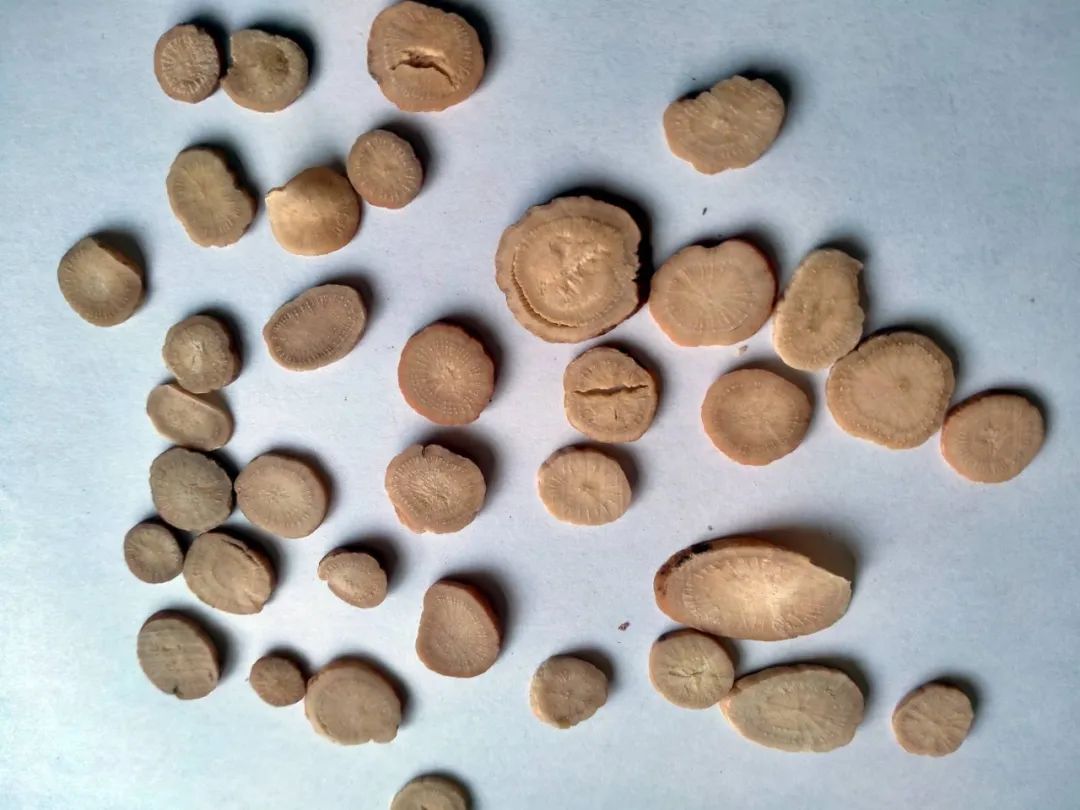
▲Round thin slices, cross-section light reddish-brown or whitish, with distinct growth rings, visible slightly raised vascular patterns arranged radially.
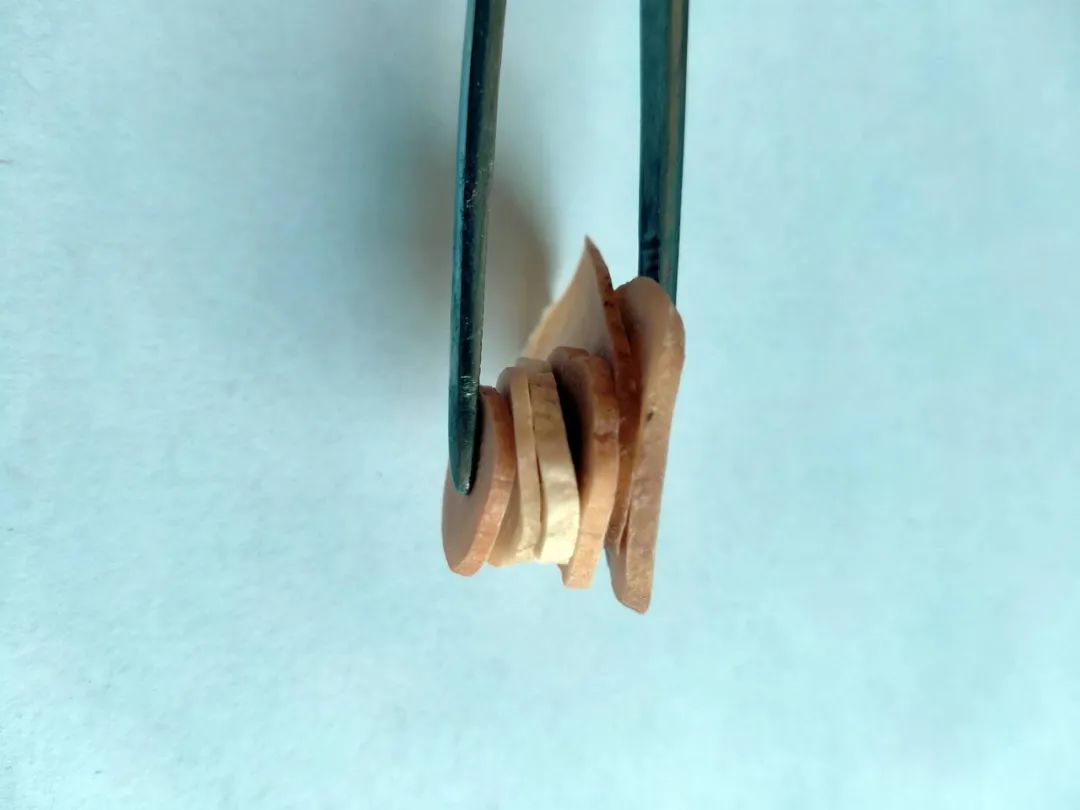
▲Surface reddish-brown or whitish.
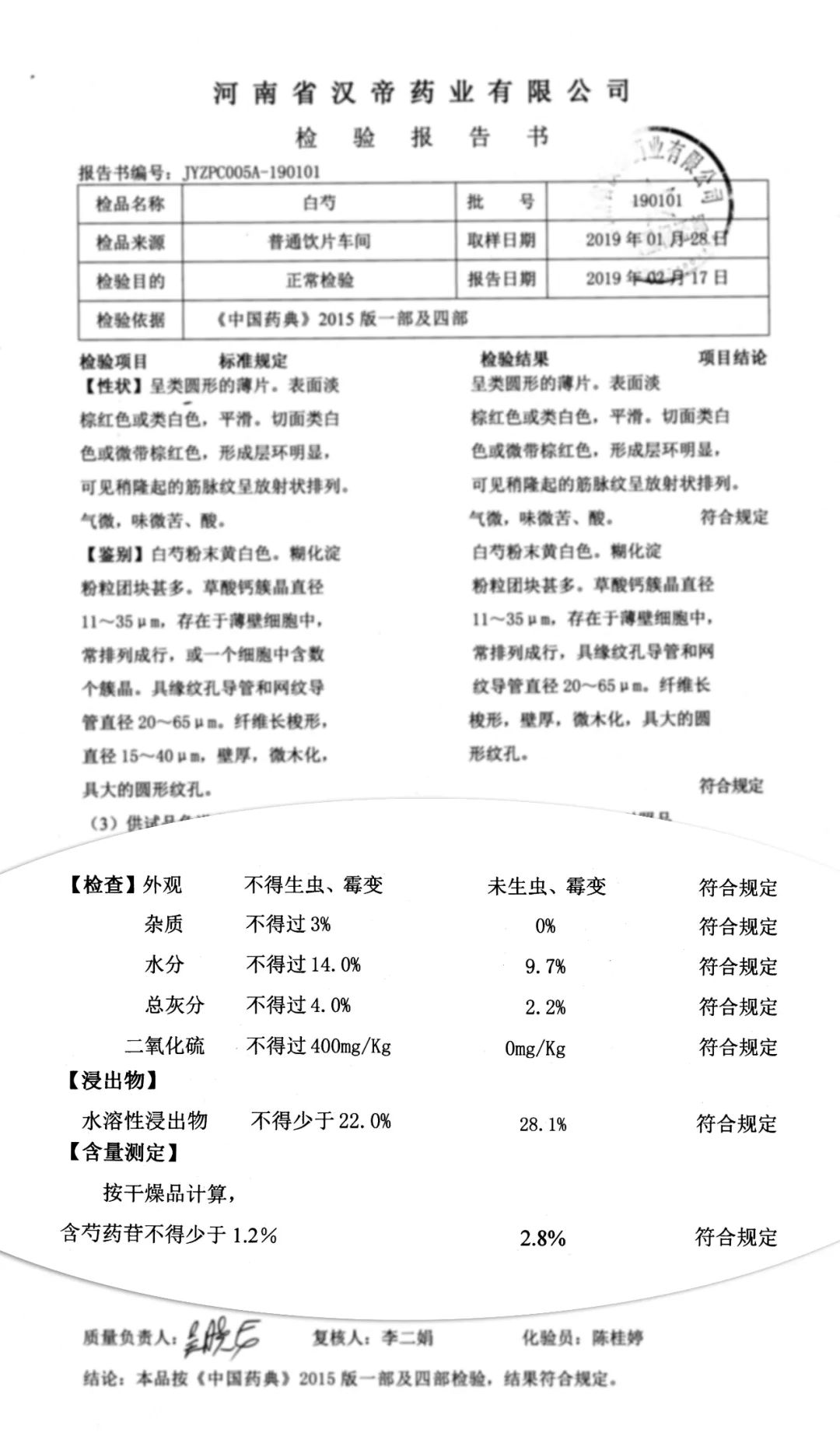
▲Dr. Liu’s Authentic Medicinal Material Bai Shao Inspection Report
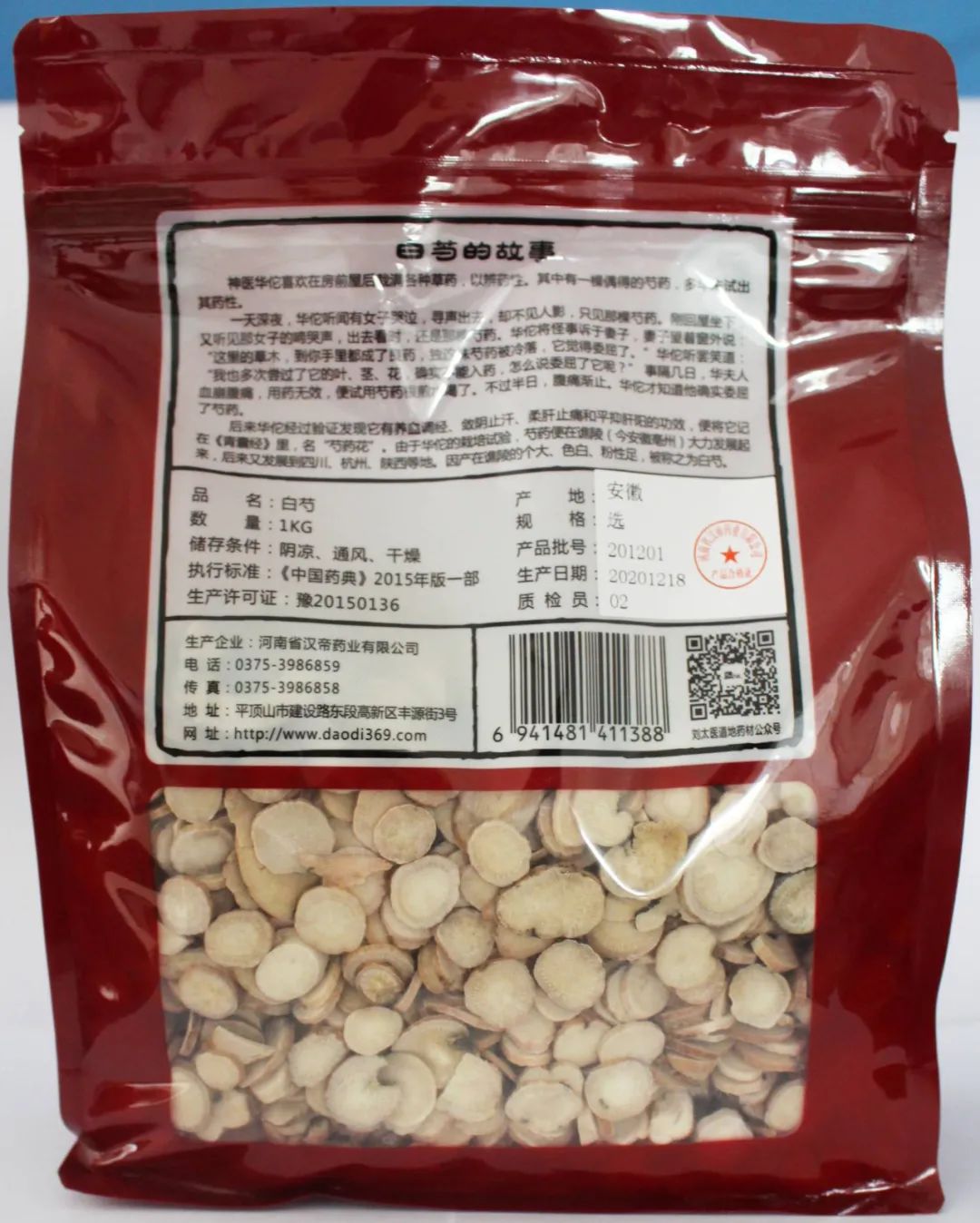
▲Dr. Liu’s Authentic Medicinal Material Bai Shao Finished Product Image
